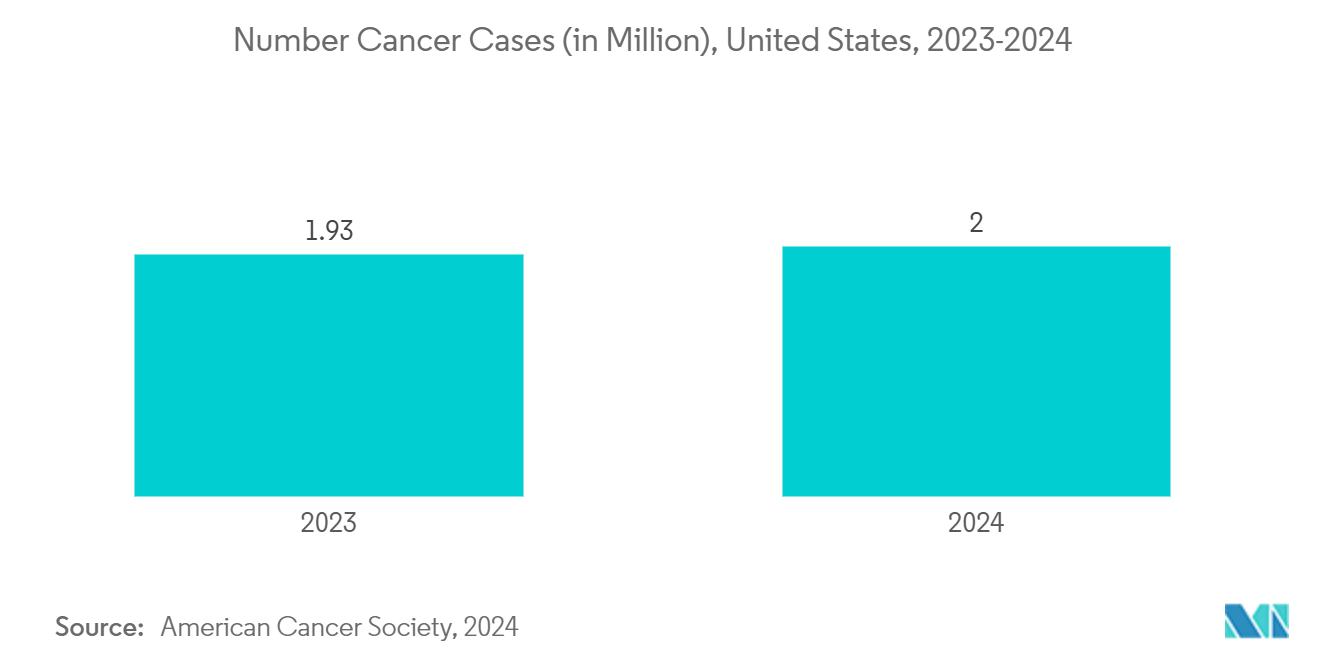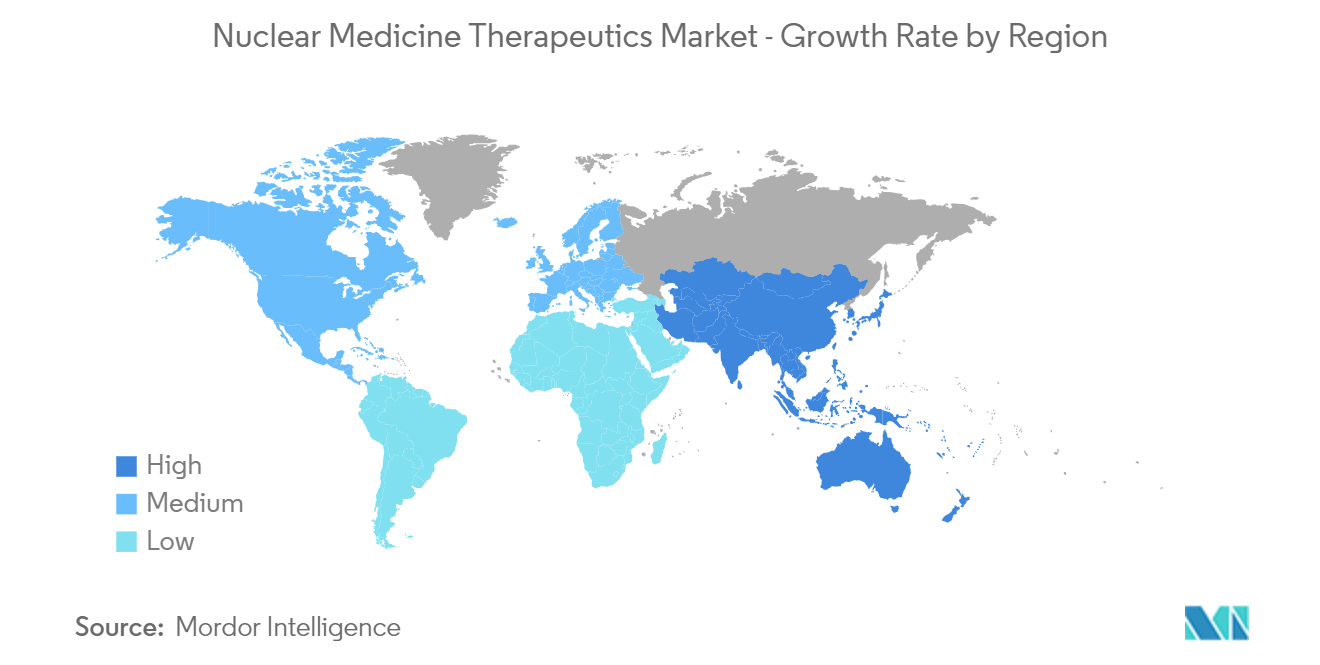Market Trends of Nuclear Medicine Therapeutics Industry
Application in Oncology is Expected to Hold a Significant Market Share Over The Forecast Period
The oncology segment is poised to experience substantial growth during the forecast period, mainly due to the rising burden of cancer worldwide and the innovative nuclear medicine therapeutics developed by market players for cancer treatment. The use of nuclear medicine therapy for cancer provides a unique advantage in that radioactive molecules can specifically target tumor cells. These molecules are administered intravenously; they circulate in the body, adhere to tumor cells, deliver radiation directly, and cause them to die.
The widespread application of nuclear medicine therapeutics in cancer therapy is expected to contribute to the growth of the market during the forecast period. For instance, as per the Australian Institute of Health and Welfare, the country recorded 14,800 lung cancer cases in 2023 compared to 14,529 lung cancer cases in 2022. Furthermore, in September 2023, according to the study published in the Journal of Cancer Epidemiology, Biomarkers, and Prevention, there were 1.0 million cancer cases reported in Japan in 2022, and it is projected to reach 3.6 million cancer cases by 2050. Thus, the high prevalence of cancer cases is projected to bolster the demand for nuclear medicine over the forecast period.
Additionally, the launch of new products is expected to boost the segment's growth during the forecast period. For example, Novartis received the US FDA’s approval in March 2022 for Locametz, a complementary diagnostic imaging agent that uses gallium-68 radiolabeling to identify prostate-specific membrane antigen (PSMA)-positive lesions.
Similarly, in February 2023, Telix Pharmaceuticals Limited announced the successful completion of a joint research project with Heidelberg University Hospital (UKHD) under the Research Cooperation Agreement. The primary objective of this project was to develop and validate a generator-based theranostic compound for the treatment of urologic oncology, which targets PSMA and utilizes the beta-emitting isotope rhenium-188 (188Re).
In conclusion, the high prevalence of cancer globally and advances in nuclear medicine therapeutics for cancer treatment are expected to fuel the growth of the oncology segment during the forecast period.

North America is Anticipated to Hold a Significant Share in the Nuclear Medicine Therapeutics Market Over the Forecast Period
North America is expected to dominate the market owing to factors such as the rising incidence of cancer and cardiovascular disorders, better healthcare infrastructure, awareness about nuclear medicine therapeutics among people, and the strong presence of industry players in the region.
The growing burden of chronic diseases is expected to increase the demand for nuclear medicine. For instance, according to the American Cancer Society 2024 update, about 2.0 million new cancer cases are estimated to be reported in 2024, compared to 1.93 million cases in 2023 in the United States. Similarly, an increase in breast cancer cases is expected to raise the demand for advanced cancer therapies like nuclear medicine, bolstering market growth over the forecast period. For instance, in September 2023, the government of Canada reported that about 28,600 Canadian women were diagnosed with breast cancer in 2022, representing 25% of all new cancer cases in women in the same year.
As per the Nuclear Medicine Association, in April 2022, 20 million nuclear medicine procedures were performed every year in the United States. Hence, the use of radiopharmaceuticals in diagnosis and therapeutics is expected to grow in the region during the forecast period.
The increasing number of approvals and launches of nuclear medicine is expected to boost segment growth. For instance, in October 2023, Positrigo launched its dedicated brain PET system, NeuroLF, by incorporating its US subsidiary. The US market experiences great momentum for brain positron emission tomography (PET) due to the availability of disease-modifying therapies for Alzheimer’s disease (AD).
Therefore, owing to the aforementioned factors, such as the high prevalence of cancer and other diseases and research studies on nuclear medicine therapeutics, the market is anticipated to grow in North America.


